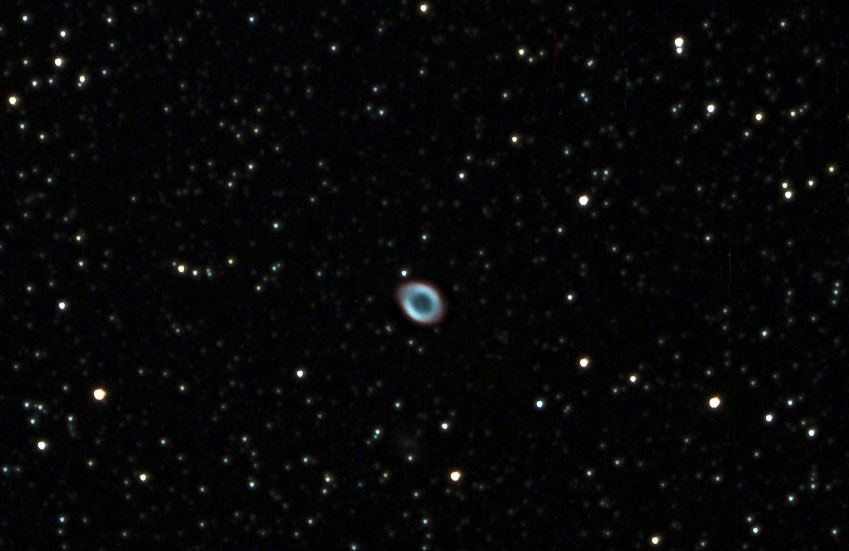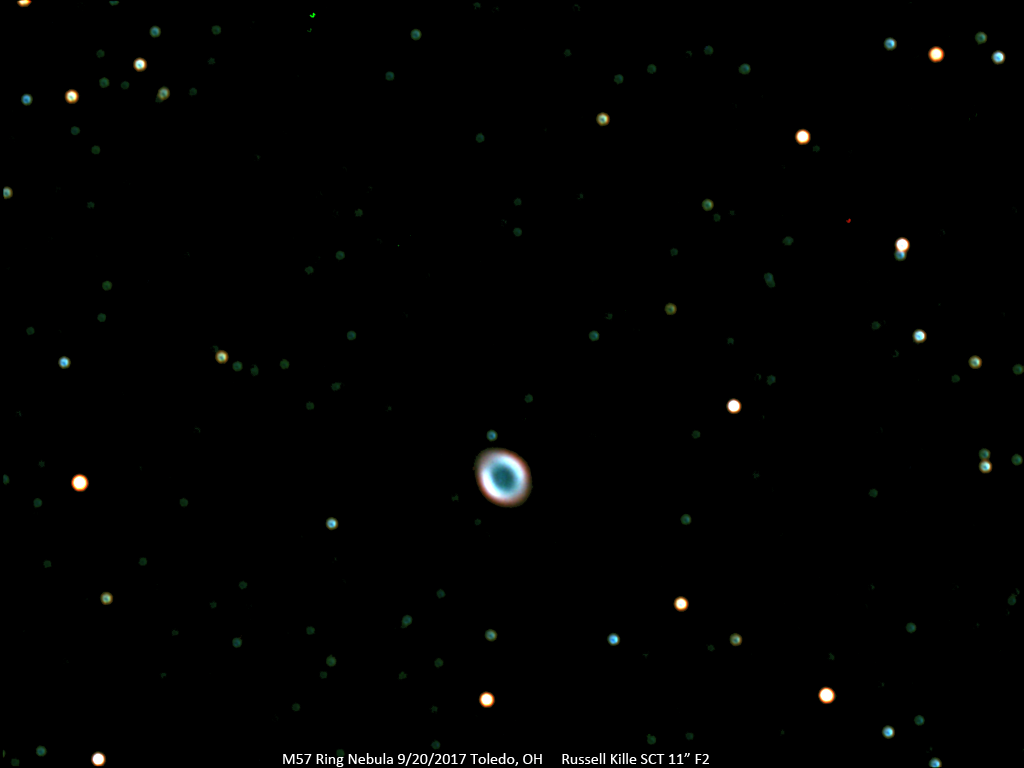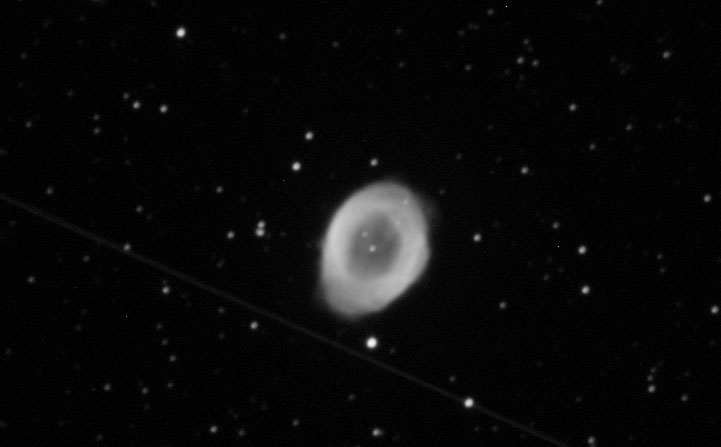
M57 Ring Nebula
Magnitude: 8.8
Distance: Aprox: 2,283 light-years
Constellation: Lyra
Diameter: 2.6 light-years
The Ring Nebula is a well-known planetary nebula which lies to the south of Vega, the brightest star in Lyra and one of the stars that form the Summer Triangle. Planetary nebula are glowing shells of ionized gas ejected from red giant stars late in their lives. The nebula is expanding at a rate of about 1 arc second per century, which corresponds to a velocity of 20 to 30 km/s. The nebula’s ring shape appears in different colours and the different layers seen in images are not equally bright. This is because they consist of different layers of the central star, or different elements at different temperatures. The outermost layer, which appears red in images, consists almost entirely of hydrogen. Elements that appear in different colours include doubly-ionized oxygen, molecular nitrogen, molecular sulphur, and helium.
The nebula’s central white dwarf is a difficult target with a visual magnitude of 14.8. The best time of year to observe M57 is in the summer months.
Taken 7/1/18 in Grand Rapids, Ohio by Russell Kille on a CPC 1100 with Hyperstar @ F2 and ZWO ASI294MC Pro camera


Taken 11/05/2018 via iTelescope remote access by Russell Kille
Location: Auberry, California / Elevation: 1405m, 4609 ft.
UTC -8:00
37° 4' 12" North, 119° 324' West
Telescope Used: Planewave 24" / 610mm f/6.5
Focal Length: 2800mm Camera: LCCD: SBIG ST-4000XCM (2048 x 2048)
Resolution: 1.45 arc-secs/pixel
Camera: CCD: FLI 11002 QE: 42% (4008 x 2672) Resolution: 0.634 arcsec/pixel FOV: 42.4 x 28.2 arcmin
